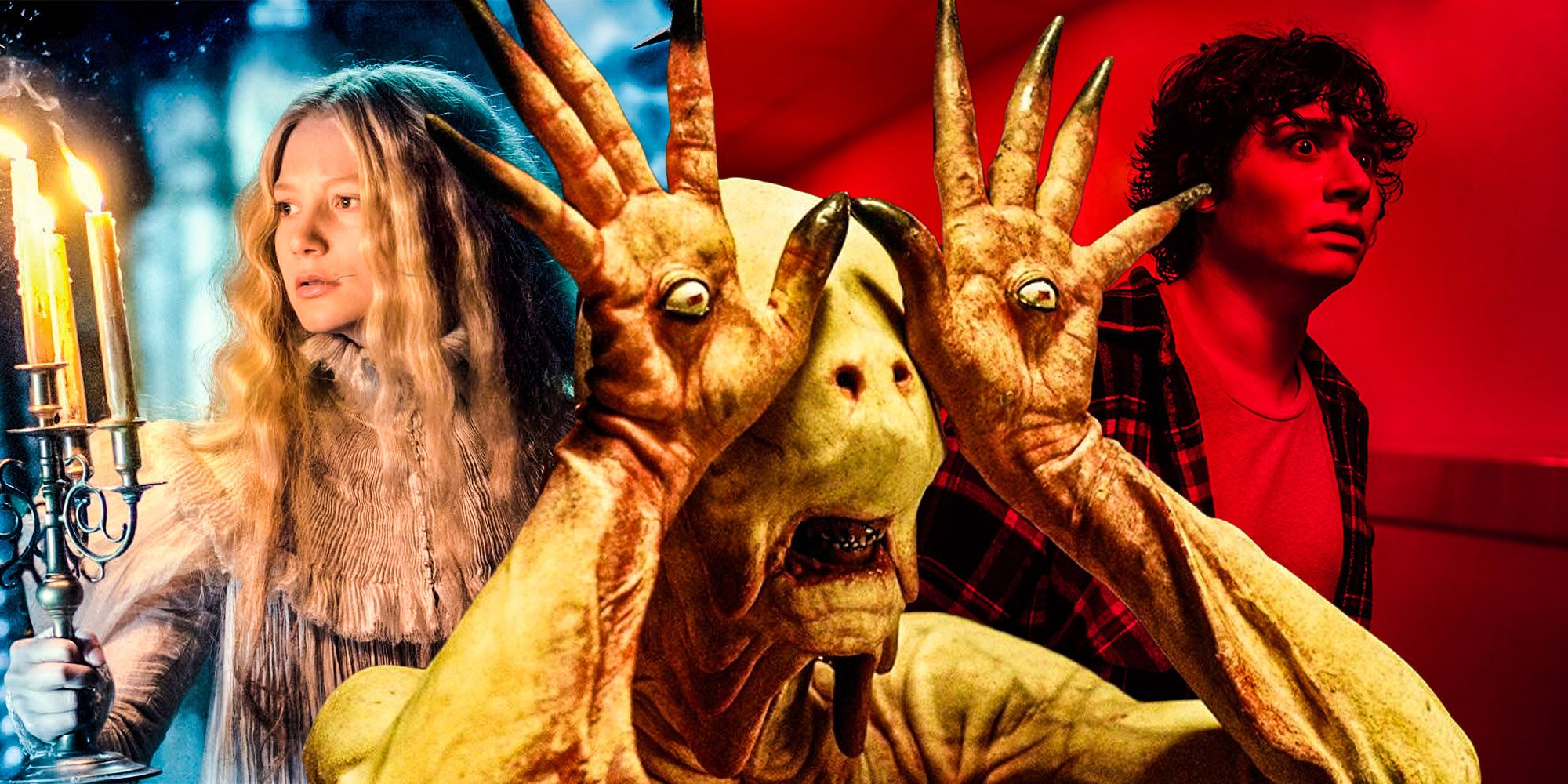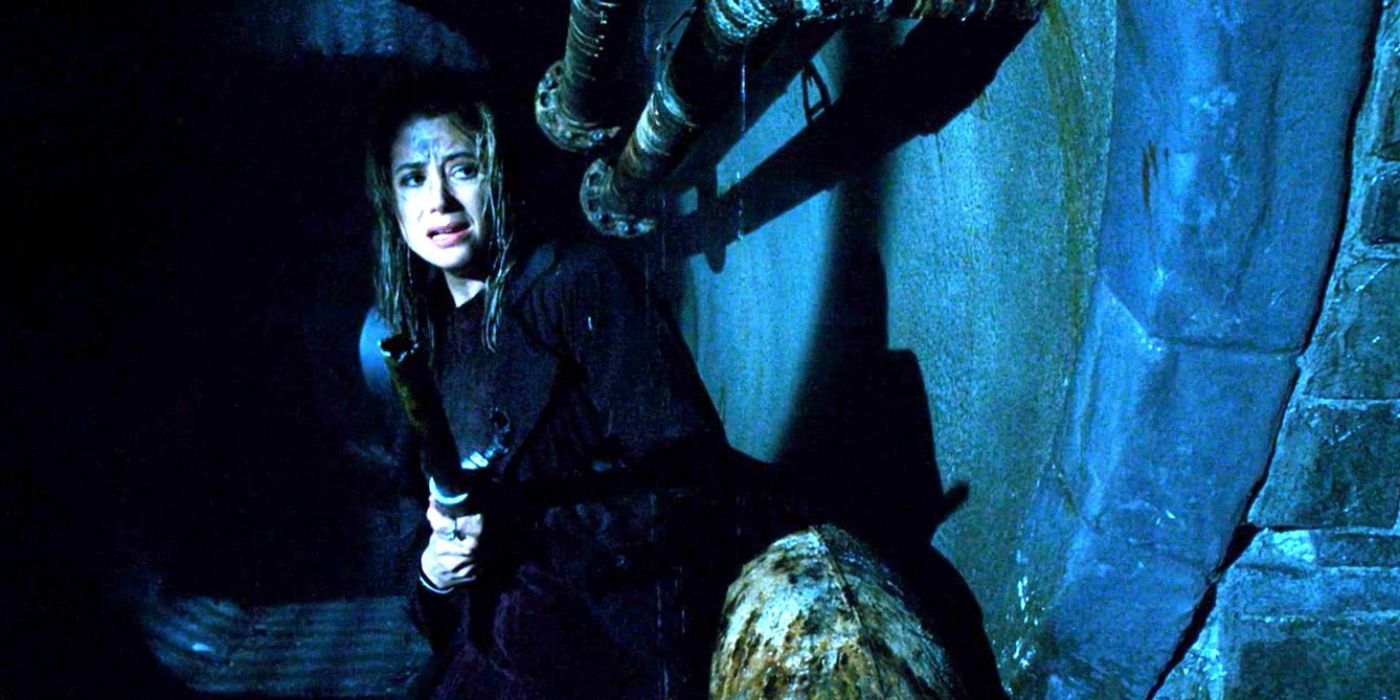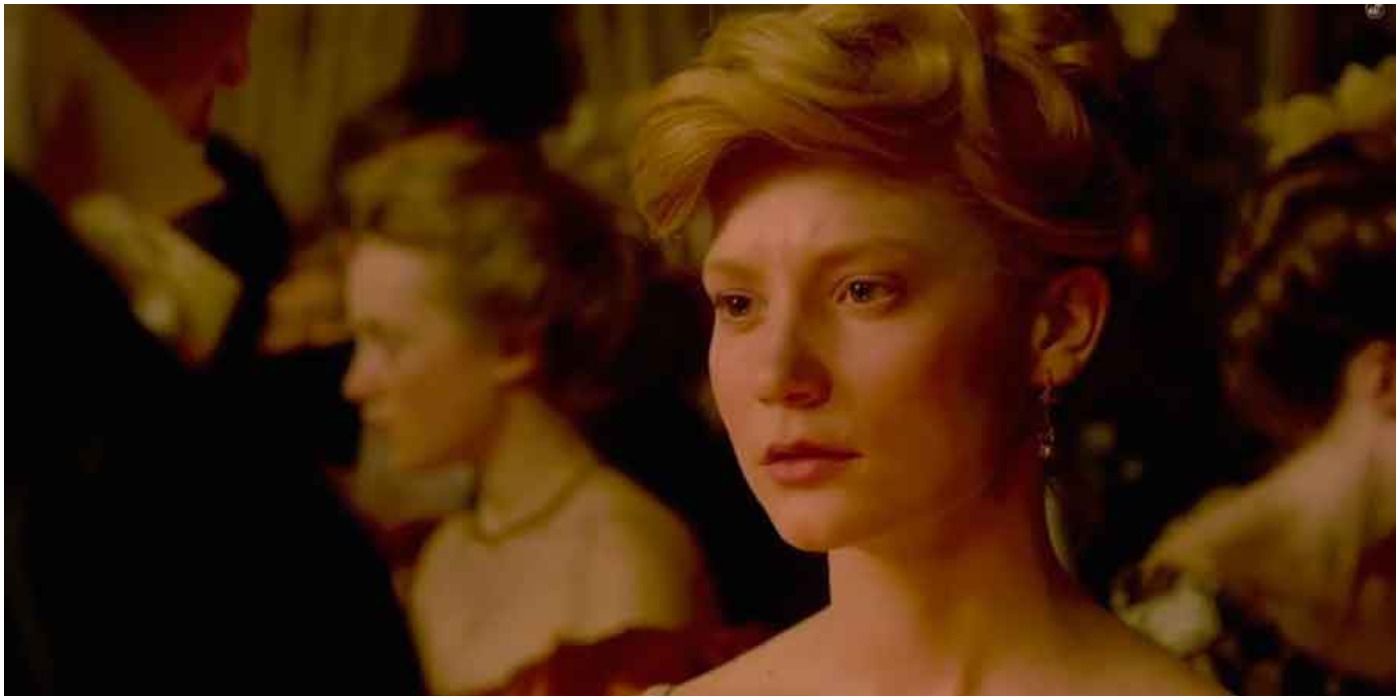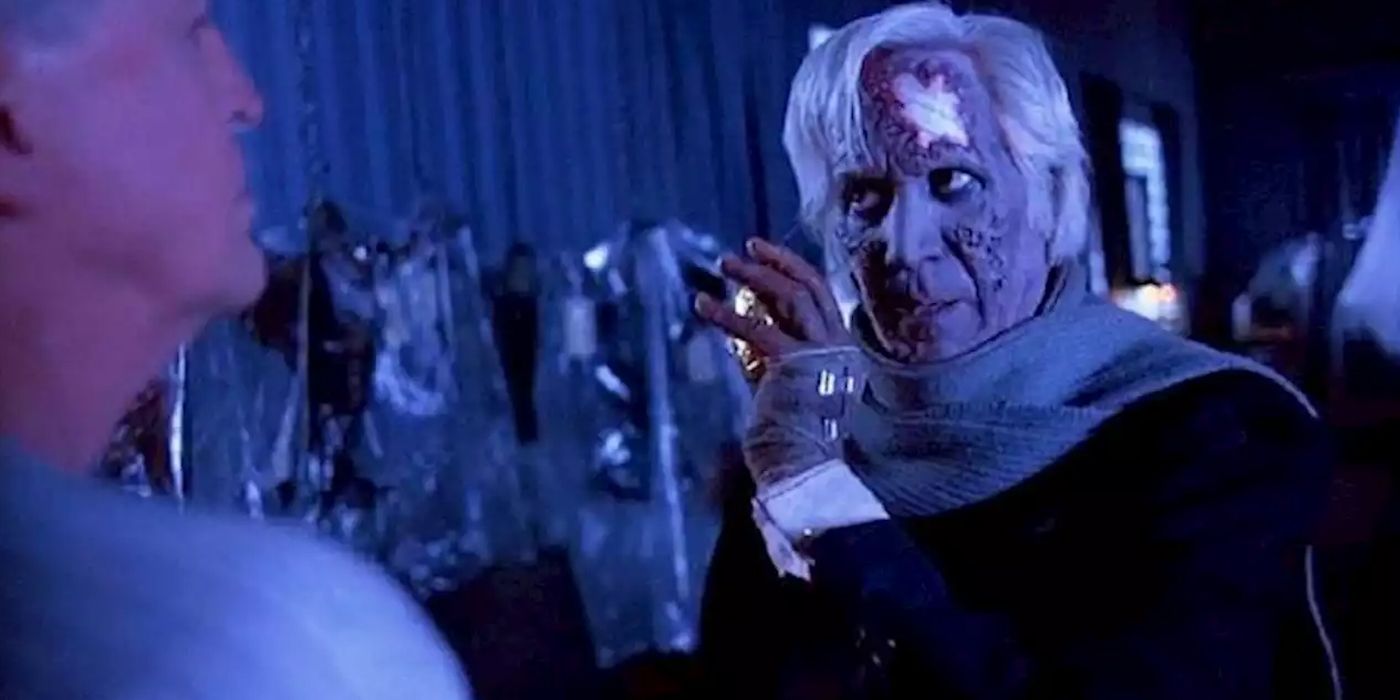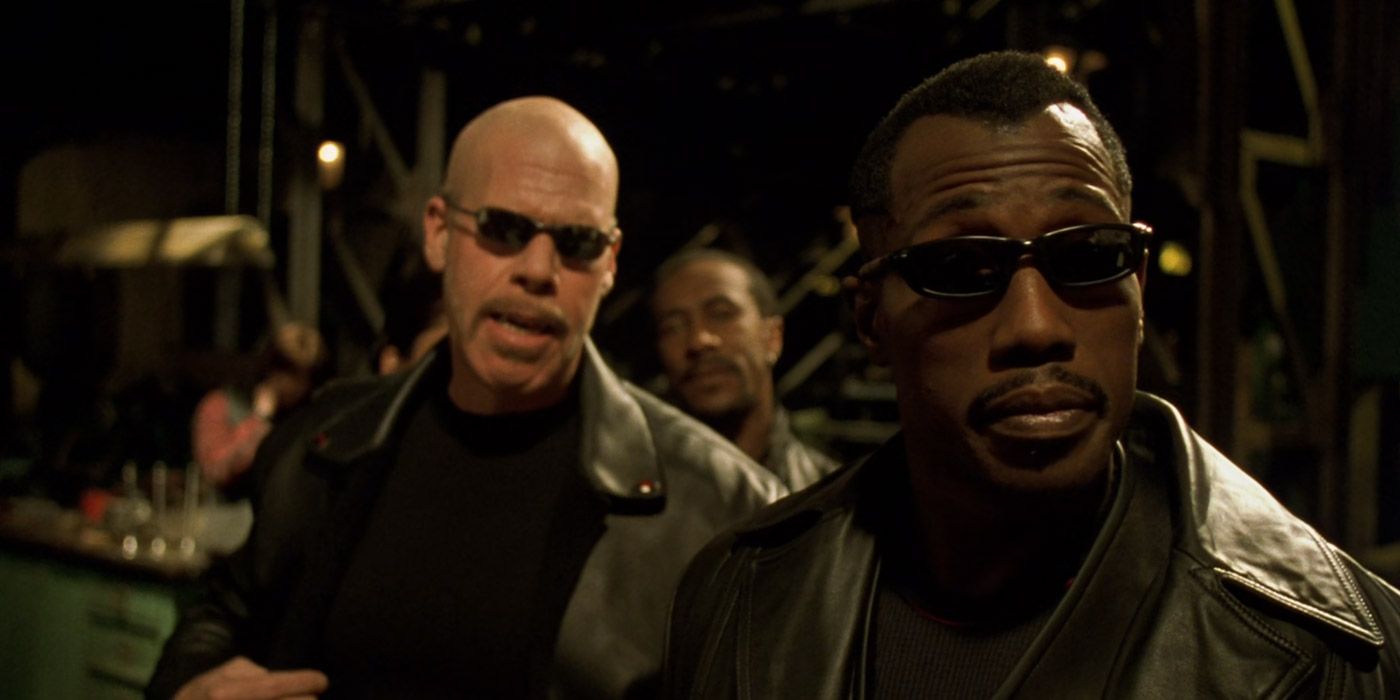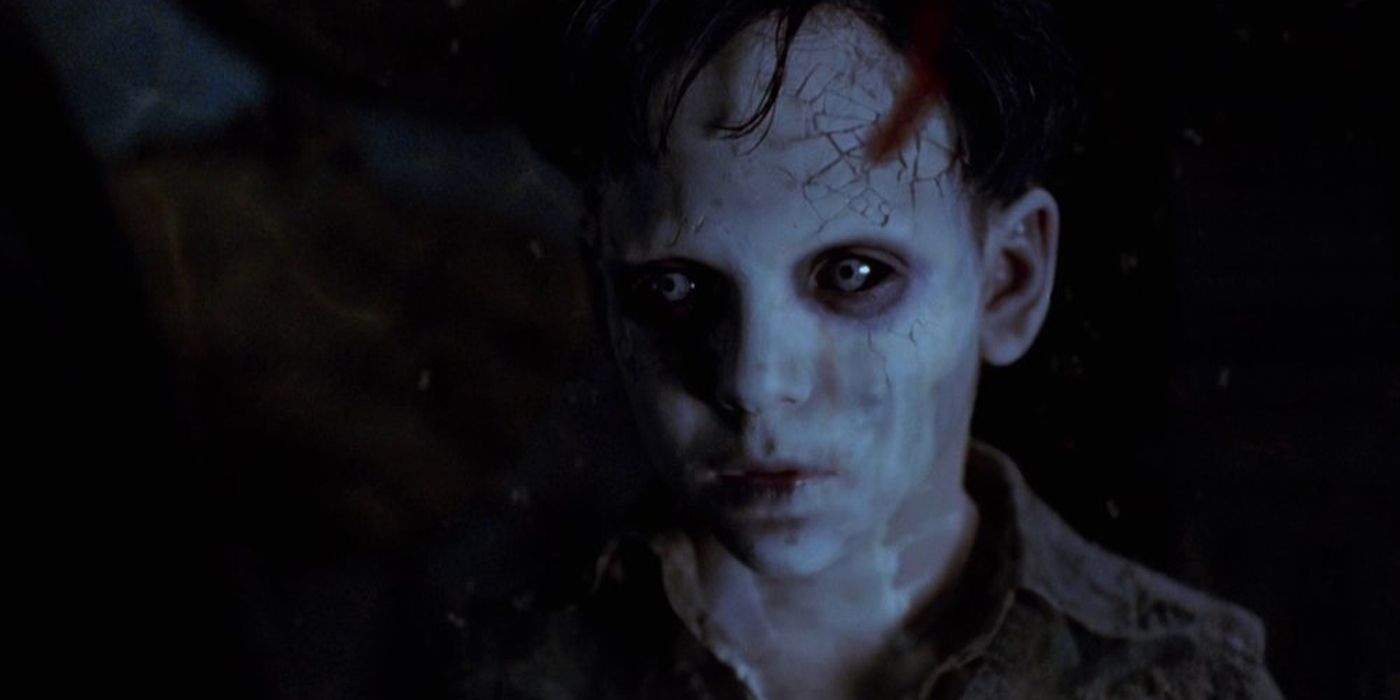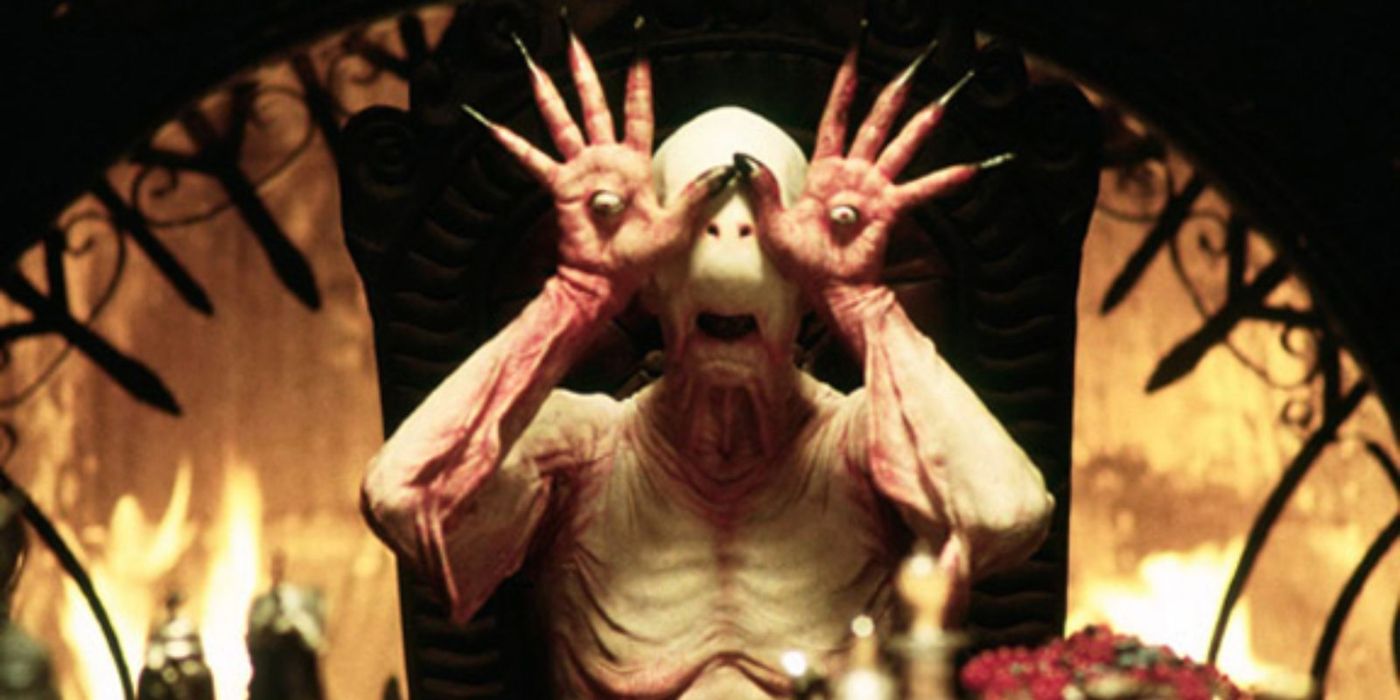The Shape of Water director Guillermo del Toro made his name in the horror genre, but how do his many efforts rank in comparison to each other? Although his name is also associated with fantasy films, blockbuster director Guillermo del Toro is mostly known for his many horror movies. Like Wes Craven and John Carpenter, del Toro’s name is synonymous with big-screen scares, with the majority of his movies being some form of horror outing.
Some of del Toro’s biggest outings like the kaiju movie Pacific Rim and the Hellboy franchise allow their horror elements to take a backseat to sci-fi, action, and fantasy. However, del Toro has also helmed a string of horror movies, many of which are deservedly critically acclaimed. The early outings The Devil’s Backbone and Cronos, for example, are pure horror movies that showcase how good del Toro is at scaring viewers senseless.
It's unclear when moviegoers will get to see del Toro return to horror. But how do his horror efforts so far rank in comparison to each other? To date, among his ten films del Toro has helmed no less than six horror movies (not including genre-blending experiments like The Shape of Water and 2021's dark psychological thriller Nightmare Alley), and their receptions range from acclaimed to disappointing. So, with the likes of Mimic being largely forgotten while Blade II was, in contrast, a huge success, which is the best del Toro horror so far, and which outings in the genre were rare misfires for the otherwise celebrated director?
6. Mimic
It is no easy task to call one of del Toro’s horror movies the director’s “worst." He has yet to make an outright bad horror movie, meaning the movie that ends up at the bottom of the rundown is still a pretty solid outing. Mimic is a 1997 monster movie that heads down into the sewers beneath New York in search of the Judas breed, a killer insect species created by genetic engineering. The movie’s conflicted heroine created the species to combat cockroach infestations, but they’ve since grown too powerful for their own good and started to take over the subterranean setting. Mimic is a perfectly fine creature feature, but del Toro was not given the final cut on this one and it shows. Like the similarly lackluster Alien: Resurrection, which watered-down director Jean-Pierre Jeunet’s unique visual style the same year, Mimic tries to play down del Toro’s visionary flourishes, resulting in his most forgettable horror. Mimic was a financial success though, and would spawn two pretty terrible direct to video sequels, which del Toro thankfully opted not to have any involvement with.
5. Crimson Peak
If Mimic’s biggest issue was playing down and cutting out del Toro’s unique style too often, Crimson Peak suffers from the opposite problem. For better or worse, this lavish and colorful period piece is del Toro through and through, and at its best, the garish nightmare is a feverish mixture of melodrama and gothic horror. However, the plot is pretty predictable and a few performances are too overcooked to be enjoyable (mainly Jessica Chastain’s grating villainous turn), meaning Crimson Peak is often less scary and more silly. The movie is beautiful to look at, but like the later The Haunting of Bly Manor, this disappointing Gothic horror fails because it lacks the satirical bite of its inspirations. Fans of Guillermo del Toro's movies and visual style should still check it out at least once though, if only due to how visually striking it looks.
4. Cronos
1993’s gleefully nasty Cronos is a huge step up from the earlier titles on this list, and the most purely fun horror from del Toro’s back catalog. As later titles prove, the director often infuses his horror stories with a sense of tragic melancholy, as seen in The Devil’s Backbone, or fast-paced action heroics, as seen in Blade II, Pacific Rim, and the Hellboy franchise. Cronos, in contrast, tells the simple, blackly comic story of an amoral antique dealer who uses an ancient scarab to give himself eternal life at the cost of becoming a soulless bloodsucker. This creepy story could be an outing from one of the acclaimed horror anthology Tales From the Crypt’s better seasons, and del Toro’s assured direction ensures that the twisty, unsettling narrative keeps its tongue in cheek regardless of how bloody proceedings become. The most mean-spirited of del Toro’s horror, Cronos is also one of the best of the bunch.
3. Blade II
While Cronos may be the most blackly comic of del Toro’s horrors, it’s not the most action-packed vampire movie the director has done. That title goes to Blade II, a gory, mile-a-minute superhero movie that sees Wesley Snipes' human-vampire hybrid slay his way through scores of imaginatively designed monsters. The plot is pure nonsense and a touch too hard to follow for this movie to take the top spot, but Blade II is easily the most fast-paced and thrilling of del Toro’s horrors, and also the best of the Blade movies. Blade’s status as a vampire/human hybrid makes him a uniquely tough antihero, the gore is plentiful, and the Reapers provide a far scarier and more formidable foe for the titular character than the first film’s disappointing villain. Sadly, the Blade franchise would go on to be tarnished a bit by 2004's utterly lackluster Blade: Trinity, which really could've benefited from having someone like del Toro occupying the director's chair.
2. The Devil’s Backbone
A huge tonal shift from Cronos and Blade II, The Devil’s Backbone takes the opposite approach to horror from earlier del Toro outings. Here, the scares stem from tragically mistreated characters doing their best to muddle through life, and the monsters of the movie are very much human, heartless as they can be. A devastating horror drama, The Devil’s Backbone tells the tale of Carlos, a young orphan taken in by a shelter for Republican children whose parents were killed in the Spanish Civil War. At first glance, the movie’s villain appears to be the creepy Pet Sematary-style ghost child that Carlos encounters on the school’s grounds, but as the tale unfolds a more complicated and sad story is illuminated. The Devil’s Backbone isn’t del Toro’s most unrelentingly scary horror, but it is his most moving, and the movie manages the impressive feat of being both genuinely unsettling and poignant at once, a tonal balance many directors fail to find. Had del Toro not gone on to direct the top pick of this ranking, The Devil's Backbone would definitely be his crowning achievement within the horror genre, and arguably one of the most effective ghost movies ever made.
1. Pan’s Labyrinth
Set in Franco’s Spain, Pan’s Labyrinth is a fantasy horror that sees its heroine Ofelia retreat into an imagined abandoned labyrinth to escape her abusive stepfather, the fascist Captain Vidal. However, this eponymous location is far from a comforting refuge for the disturbed girl, and the heroine encounters monstrous figures like the child-eating Pale Man as well as the gruff but well-meaning Faun during her time in the fantasy land. Pan’s Labyrinth fuses A Nightmare On Elm Street-style fantasy horror sequences with the very real horror of war to create a uniquely horrifying hybrid of fantasy, horror, and coming-of-age tragedy, and this disarming tale transcends genre to become one of Guillermo del Toro’s strongest movies to date. Pan’s Labyrinth can stand toe-to-toe with The Shape of Water among the director’s best and is easily his strongest horror movie so far. In hindsight, it's a crime this masterpiece didn't earn Best Picture and Best Director nominations at the Oscar. Thankfully, del Toro would eventually get his Oscar moment in the spotlight.

